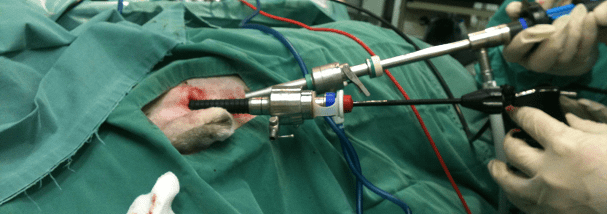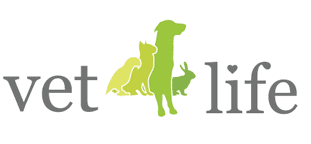 Laparoscopy is a minimally invasive procedure for viewing the internal structures of the abdomen. Laparoscopic surgery is sometimes called "key hole surgery" or "minimal invasive surgery".
Laparoscopy is a minimally invasive procedure for viewing the internal structures of the abdomen. Laparoscopic surgery is sometimes called "key hole surgery" or "minimal invasive surgery".
A special surgical instrument, known as a laparoscope (camera), is inserted through a small incision in the abdomen. This lights up and magnifies the structures inside the abdomen on a TV screen for a more detailed examination. Additional small cuts are made to aid the use of surgical instruments. The most common application of laparoscopy is biopsy of internal organs. Within the last few years however, laparoscopy has been used a lot more as a less traumatic and less painful alternative to traditional bitch spaying.
Advantages of Laparoscopic Spays over Traditional Surgery
In general, compared with traditional surgery, with laparoscopic surgery there are several advantages:
- The entire surgery is performed through two tiny holes rather than one large abdominal opening, meaning there is a much smaller scar
- These small incisions are less painful and speed up recovery
- There is less surgical stress - post-operative pain may be reduced by up to 65% than a traditional spay
- Laparoscopy allows for excellent viewing of abdominal organs
- Controlled incisions stop pain and bruising caused by tearing of tissue associated with traditional spays
Traditional Bitch Spays
In a traditional spay a 2 to 3 inch or larger hole is made in the abdomen through which the ovarian ligament is blindly torn from the abdominal wall. This tearing may cause bruising and pain post-op. Traditional spays cause a lot of tension on the ovaries and uterus which may cause trauma and bleeding.
Laparoscopic Spays
The laparoscopic technique requires only two very small incisions to be made, typically they are just half a centimetre in size. The procedure is performed with magnified views of the organs allowing for greater precision. The ovarian ligament is carefully cauterized then cut, rather than just torn, causing less trauma than traditional spays. Laparoscopic spays are often less painful and recovery is quicker.
For more information about laparoscopy or key hole surgery, have a look here.


